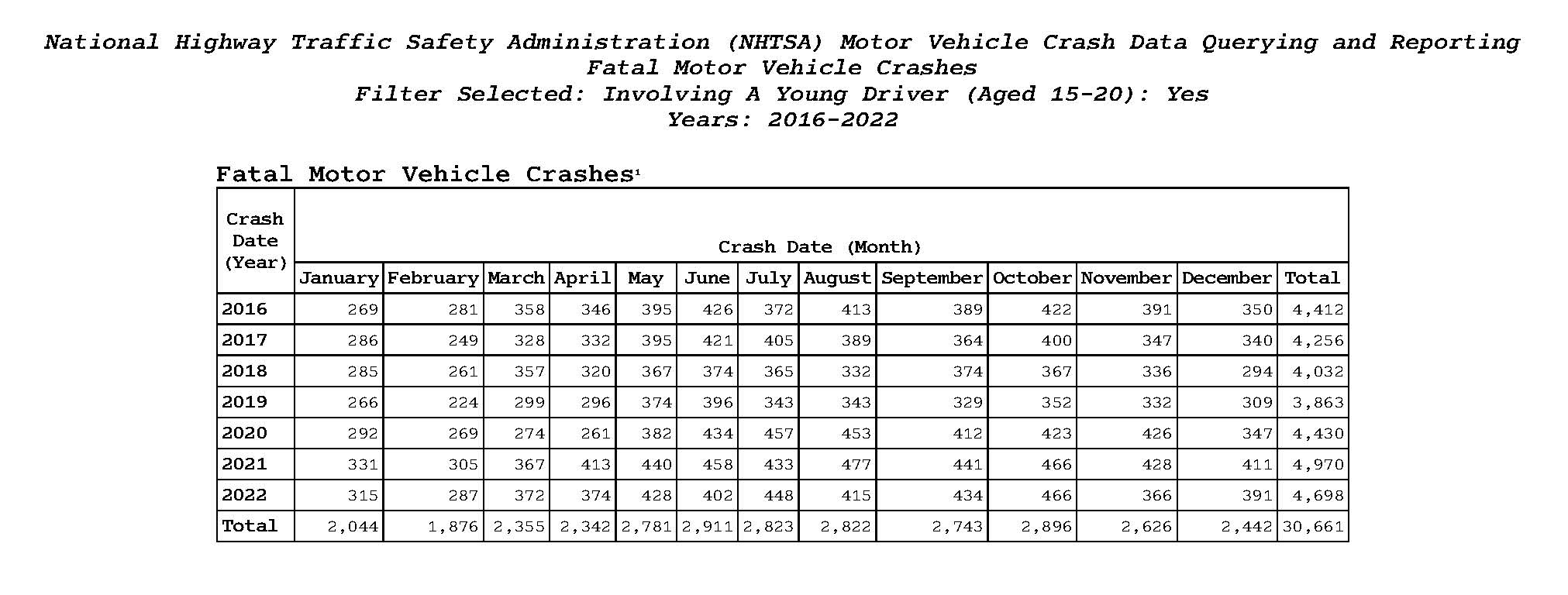Summer Months Usher in Deadliest Period for Teen Drivers
Greater Washington Nonprofit Urges Parental Involvement to Prevent Underage Drinking
Tysons, VA, May 9 — Citing the fact that the summer months usher in that contiguous period (May – August, 2016 – 2022) when the greatest number of U.S. teen traffic deaths occur [i], a Washington-metropolitan area alcohol education group is urging parental involvement to combat both underage drinking and drunk driving this summer.
The Tysons-based, nonprofit Washington Regional Alcohol Program (WRAP) is providing area parents of teens with Ten Tips for Parents to Prevent Underage Drinking (which are available as a downloadable and or printable pdf). WRAP’s ten annual summer tips, designed to inform Greater Washington parents on how best to deter underage drinking during the dangerous summer months include:
- Understand the Dangers… Drinking underage not only increases the chances of dependency later on in life but also leads to short and long-term consequences as well as leading to other risky behaviors.
- Know the Law… The District of Columbia, Maryland and Virginia all have zero-tolerance laws making it illegal to consume, possess or purchase alcohol under the age of 21.
- Be a Role Model… Parents should be role models to their teens and make sure their own behaviors are appropriate. Use alcohol moderately, serve as responsible hosts and never drink and drive.
- Know your Liability… In most cases, it is unlawful for parents to allow their children’s friends to consume alcohol in their home. Parents or adults may face criminal charges later on if these same “friends” are involved in a crash.
“In 2022 over a dozen teenagers died in U.S. motor vehicle crashes every single day during the summer months (May-August),“ said WRAP President Kurt Erickson. “For too many parents, unfortunately, summer’s unstructured time may also be a deadly time for their teenage children and their friends.”
In 2021, 27-percent of young drivers (ages 15-20 years old) killed in U.S. crashes had been drinking (with a blood alcohol concentration [BAC] level of 0.01 grams/deciliter or higher) according to the National Highway Traffic Safety Administration (NHTSA). That same year, more than one-in-five (22%) of young drivers killed in U.S. traffic crashes had a BAC of 0.08 g/dL or higher. [ii]
NHTSA data further shows that while young drivers comprise just five-percent of all licensed drivers in the U.S., they account for 8.4-percent of all drivers involved in fatal crashes. [ii]
The U.S. Centers for Disease Control and Prevention labels alcohol as the most commonly used substance among young people in the U.S. and that underage drinking is a “significant public health problem in the U.S.” responsible for approximately 4,000 deaths annually. [iii]
“Make no mistake about it, parents play an integral role in when and if their children drink alcohol,” said Erickson. “These tips are simply meant to reinforce their efforts to foster a healthy and safe summer for them and their teenage children.”
Founded in 1982, the nonprofit [501(c)(3)] Washington Regional Program (WRAP)is an award-winning public-private partnership working to prevent drunk driving and underage drinking in the Washing ton-metropolitan area. Through public education, innovative health education programs and advocacy, WRAP is credited with helping to keep the annual percentage of metro-Washington traffic deaths involving alcohol-impaired driving historically lower than the national average. WRAP, however, may best be known to area residents via the organization’s popular free safe ride service to prevent drunk driving, SoberRide®.
For more information, visit WRAP’s web site at www.wrap.org.
[i] National Highway Traffic Safety Administration (NHTSA) / Fatality Analysis Reporting System (2016-2022, below)
[ii] NHTSA Traffic Safety Facts: Young Drivers (August 2023, 2021 Data) https://crashstats.nhtsa.dot.gov/Api/Public/ViewPublication/813492.pdf
[iii] Underage Drinking https://www.cdc.gov/alcohol/fact-sheets/underage-drinking.htm
